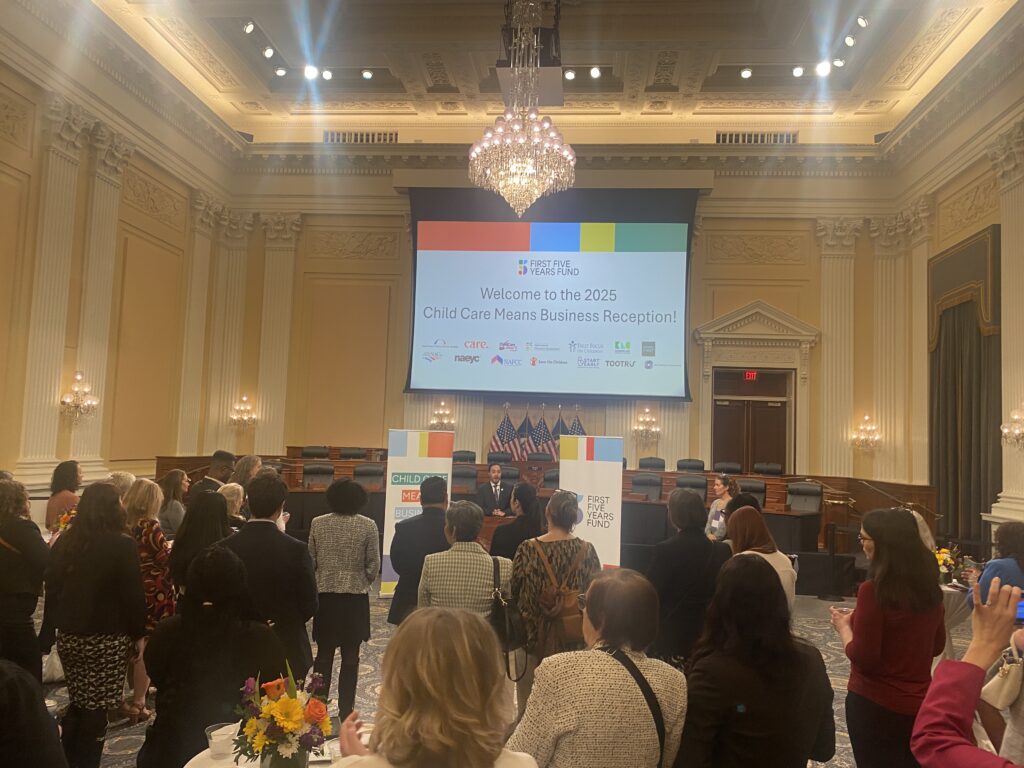Fact Sheet: Child Care and the Economy

Affordable access to child care supports a child’s healthy development, ensures parents can go to work or school, and helps businesses and our economy thrive. But millions of American families are struggling to find the affordable, reliable, quality child care they depend on.
Read more about the impact child care has on families, women, businesses, and the economy below:
The Need
- More than two-thirds of children ages 5 and under need child care because all of their available parents are in the workforce.
- At the same time, child care can be hard to find and even harder to afford. According to a new report from Care.com, on average, working parents with young children are spending 24% of their income on child care.
- And 20% say they spend more than $36,000 on child care in a year. That’s more than in-state college room and board or the average year of rent.
The Impact: Families and Women
- Not having child care — or enough child care — costs individual parents more than $5,500 a year, or more than $78 billion in total.
- According to a Women’s Bureau report, child care prices accounted for up to 75% of income for single-parent households.
- Child care expenses affect the ability of parents to go to work. According to a bipartisan poll conducted on behalf of FYFF, more than half (52%) of voters say they (or someone they know) has had to miss a shift or reduce hours at work or cut back on household essentials (51%) because of a problem with their child care situation.
- And nearly 60% of non-full-time working parents say they would go back to work full time if their child had access to quality child care at a reasonable cost.
- Many women cut their hours or drop out of the workforce entirely due to child care challenges. This has a massive impact on both short-term financial security as well as long-term retirement savings.
o (According to one 2023 study, every woman at a senior management level who gets promoted, two women leave their jobs, most citing child care as a major reason.)For example, a woman making $60,000 a year who takes five years out of the workforce could see nearly $100,000 less in retirement savings (assuming a 7% rate of return), according to a recent joint white paper published by Oster and TIAA.
The Impact: businesses
- On average, businesses lose $1,640 a year for each working parent due to lost revenue and hiring costs because of insufficient child care, totaling $23 billion annually.
- In FFYF polling of small business owners, 88% of business owners agree that employees who have young children will be more likely to remain in the workforce if they have access to affordable, high-quality child care and 78% said their business would be on stronger footing if their employees had better access to affordable, quality child care.
- A study by the National Association of Manufacturers found that a lack of child care was a top issue for all workers and addressing that lack could help close the skills gap and fill jobs.
- Sen. Lisa Murkowski (R., AK) has also cited child care challenges as a military issue. “I had a sit down with the head of the commander from Joint Base Elmendorf Richardson, and he’s telling me the number one challenge he’s got right now when it comes to military readiness is the availability of child care.”
The impact: the economy
- According to recent studies, child care challenges cost the United States economy an estimated $122 billion a year.
- The opposite is also true. Many people don’t realize that federal funding for child care programs is more than double the combined investment of state and local governments. (For comparison, in the K-12 system, federal funds account for less than 10% of funding, compared to 90% from state and local governments.)
- Investing in high-quality child care and early learning programs can generate up to $7.30 per every dollar invested, and the availability of early childhood education programs attracts homebuyers and increases property values by $13 for every dollar invested in programs.
Subscribe to FFYF First Look
Every morning, FFYF reports on the latest child care & early learning news from across the country. Subscribe and take 5 minutes to know what's happening in early childhood education.



